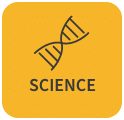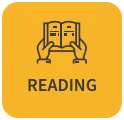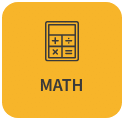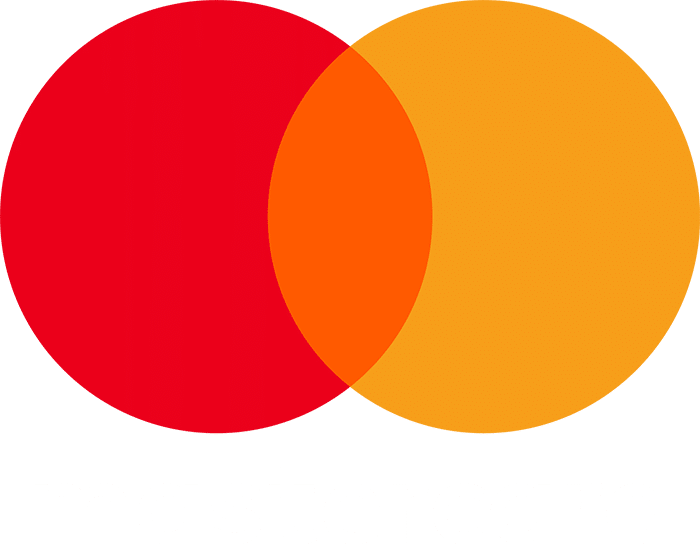- Ontario:
- Math
- Language Arts
- Social Studies
- Science
Ontario
Skills available for Ontario Grade 5 Math Curriculum (2020)
Expectations are in black and skills are in blue. Click on the name of the skill to practice that skill.
Please check back as we are always adding more content!
5.B Number
5.B1 Number Sense
Whole Numbers
5.B1.1 read, represent, compose, and decompose whole numbers up to and including 100 000, using appropriate tools and strategies, and describe various ways they are used in everyday life
Digital Resources
Printable Worksheets
• Building Numbers in the Place Value Chart
• Decomposing Numbers up to 100 000
• Fill in the Place Value Chart
• Match the Number up to 100 000
5.B1.2 compare and order whole numbers up to and including 100 000, in various contexts
Digital Resources
• Compare Numbers Using a Place Value Chart
• Compare Numbers that Have the Same Units
• Compare Numbers that Have Related Units
• Order Numbers From Least to Greatest Using Place Value
• Order Numbers From Greatest to Least Using Place Value
• Order Numbers From Least to Greatest Using a Number Line
• Order Numbers From Greatest to Least Using a Number Line
Printable Worksheets
Fractions, Decimals, and Percents
5.B1.3 represent equivalent fractions from halves to twelfths, including improper fractions and mixed numbers, using appropriate tools, in various contexts
Digital Resources
Printable Worksheets
• Exploring Equivalent Fractions
5.B1.4 compare and order fractions from halves to twelfths, including improper fractions and mixed numbers, in various contexts
Digital Resources
Printable Worksheets
• Compare Fractions Using a Number Line
• Comparing Fractions with Unlike Denominators
5.B1.5 read, represent, compare, and order decimal numbers up to hundredths, in various contexts
Digital Resources
Printable Worksheets
• Read and Represent Decimals to Hundredths
• Matching Decimals to Their Written Forms
5.B1.6 round decimal numbers to the nearest tenth, in various contexts
Digital Resources
Printable Worksheets
• Rounding Decimals to the Nearest Tenth
5.B1.7 describe relationships and show equivalences among fractions, decimal numbers up to hundredths, and whole number percents, using appropriate tools and drawings, in various contexts
5.B2 Operations
Properties and Relationships
5.B2.1 use the properties of operations, and the relationships between operations, to solve problems involving whole numbers and decimal numbers, including those requiring more than one operation, and check calculations
Math Facts
5.B2.2 recall and demonstrate multiplication facts from 0 × 0 to 12 × 12, and related division facts
Digital Resources
• Multiplication Fact Practice
Printable Worksheets
• Multiplication Facts for 1,2,3
• Math Riddle Multiplication Facts for 3,4,5
• Math Riddle Multiplication Facts for 4,5,6
• Math Riddle Multiplication Facts for 7,8,9
• Math Riddle Facts for 1 to 12
Mental Math
5.B2.3 use mental math strategies to multiply whole numbers by 0.1 and 0.01 and estimate sums and differences of decimal numbers up to hundredths, and explain the strategies used
Addition and Subtraction
5.B2.4 represent and solve problems involving the addition and subtraction of whole numbers that add up to no more than 100 000, and of decimal numbers up to hundredths, using appropriate tools, strategies, and algorithms
Digital Resources
Printable Worksheets
• Add and Subtract by Making an Easier Problem
• Practice Regrouping Ones as Tens
• Two-Digit Addition with Regrouping
• Two-Digit Addition Without Regrouping – Set 1
• Two-Digit Addition Without Regrouping – Set 2
• Math Riddle – Two-Digit Addition Without Regrouping
• Math Riddle – Two-Digit Addition with Regrouping
• Three-Digit Addition With Regrouping
• Three-Digit Addition Without Regrouping
• Math Riddle: Three-Digit Addition With Regrouping
• Math Riddle: Three-Digit Addition Without Regrouping
• Two-Digit Subtraction with Regrouping
• Two-Digit Subtraction Without Regrouping – Set 1
• Two-Digit Subtraction Without Regrouping – Set 2
• Taking Apart to Make Tens for Subtraction
• Subtract by Making an Easier Problem
• Math Riddle: Two-Digit Subtraction with Regrouping
• Math Riddle: Two-Digit Subtraction Without Regrouping
• Three-Digit Subtraction with Regrouping
• Three-Digit Subtraction Without Regrouping
• Math Riddle: Three-Digit Subtraction Without Regrouping
5.B2.5 add and subtract fractions with like denominators, in various contexts
Digital Resources
Printable Worksheets
Multiplication and Divsion
5.B2.6 represent and solve problems involving the multiplication of two-digit whole numbers by two-digit whole numbers using the area model and using algorithms, and make connections between the two methods
Digital Resources
Printable Worksheets
• Multiplying Two-Digit Numbers by Two-Digit Numbers
• Multiplying Multi-Digit Numbers by One-Digit Numbers
• Math Riddle: Multiply Two-Digit Numbers by One-Digit Numbers
5.B2.7 represent and solve problems involving the division of three-digit whole numbers by two-digit whole numbers using the area model and using algorithms, and make connections between the two methods, while expressing any remainder appropriately
Digital Resources
Printable Worksheets
• Dividing Multi-Digit Numbers by One-Digit Numbers
5.B2.8 multiply and divide one-digit whole numbers by unit fractions, using appropriate tools and drawings
Digital Resources
Printable Worksheets
5.B2.9 represent and create equivalent ratios and rates, using a variety of tools and models, in various contexts
5.C Algebra
5.C1 Patterns and Relationships
Patterns
5.C1.1 identify and describe repeating, growing, and shrinking patterns, including patterns found in real-life contexts
5.C1.2 create and translate growing and shrinking patterns using various representations, including tables of values and graphs
5.C1.3 determine pattern rules and use them to extend patterns, make and justify predictions, and identify missing elements in repeating, growing, and shrinking patterns
5.C1.4 create and describe patterns to illustrate relationships among whole numbers and decimal tenths and hundredths
Digital Resources
Printable Worksheets
5.C2 Equations and Inequalities
Variables and Expressions
5.C2.1 translate among words, algebraic expressions, and visual representations that describe equivalent relationships
Digital Resources
• Translate Equivalent Relationships
Printable Worksheets
• Algebraic Expressions with Addition
• Writing Algebraic Expressions with Addition
• Algebraic Expressions with Subtraction
• Writing Algebraic Expressions with Subtraction
• Algebraic Expressions with Multiplication
• Writing Algebraic Expressions with Multiplication
5.C2.2 evaluate algebraic expressions that involve whole numbers
Digital Resources
Printable Worksheets
Equalities and Inequalities
5.C2.3 solve equations that involve whole numbers up to 100 in various contexts, and verify solutions
Digital Resources
• Algebraic Equations with Multiple Operations
Printable Worksheets
• How to Solve Algebraic Equations
• Verify the Answer for Algebraic Equations
• Solving Algebraic Equation Word Problems
• Think About It – Expressions and Equations
Equalities and Inequalities
5.C2.4 solve inequalities that involve one operation and whole numbers up to 50, and verify and graph the solutions
Digital Resources
• Finding Inequality Solutions
Printable Worksheets
• Activity 1 – What is an Inequality?
• Activity 2 – Graphing an Inequality
• Activity 3 – Solving an Inequality
• Activity 4 – Verify an Inequality Answer
5.C3 Coding
Coding Skills
5.C3.1 solve problems and create computational representations of mathematical situations by writing and executing code, including code that involves conditional statements and other control structures
5.C3.2 read and alter existing code, including code that involves conditional statements and other control structures, and describe how changes to the code affect the outcomes
5.D Data
5.D1 Data Literacy
Data Collection and Organization
5.D1.1 explain the importance of various sampling techniques for collecting a sample of data that is representative of a population
5.D1.2 collect data, using appropriate sampling techniques as needed, to answer questions of interest about a population, and organize the data in relative-frequency tables
Data Visualization
5.D1.3 select from among a variety of graphs, including stacked-bar graphs, the type of graph best suited to represent various sets of data; display the data in the graphs with proper sources, titles, and labels, and appropriate scales; and justify their choice of graphs
5.D1.4 create an infographic about a data set, representing the data in appropriate ways, including in relative-frequency tables and stacked-bar graphs, and incorporating any other relevant information that helps to tell a story about the data
Digital Resources
Printable Worksheets
• Constructing A Double Bar Graph – Set 1
• Constructing A Double Bar Graph – Set 2
• Constructing Horizontal Bar Graphs – Set 1
• Constructing Horizontal Bar Graphs – Set 2
Data Analysis
5.D1.5 determine the mean and the median and identify the mode(s), if any, for various data sets involving whole numbers and decimal numbers, and explain what each of these measures indicates about the data
Digital Resources
Printable Worksheets
5.D1.6 analyse different sets of data presented in various ways, including in stacked-bar graphs and in misleading graphs, by asking and answering questions about the data, challenging preconceived notions, and drawing conclusions, then make convincing arguments and informed decisions
Digital Resources
Printable Worksheets
• Reading Double Bar Graphs – Set 1
• Reading Double Bar Graphs – Set 2
• Reading Double Bar Graphs – Set 3
• Thinking About Misleading Graphs
• Reading Horizontal Graphs – Set 1
• Reading Horizontal Graphs – Set 2
• Reading Tally Charts – Set 1
• Reading Tally Charts – Set 2
• Reading Circle Graphs – Set 1
• Reading Circle Graphs – Set 2
• Reading Circle Graphs – Set 3
• Reading Circle Graphs – Set 4
• Reading Circle Graphs – Set 5
• TEST: Reading Circle Graphs – Set 1
5.D2 Probability
Probability
5.D2.1 use fractions to express the probability of events happening, represent this probability on a probability line, and use it to make predictions and informed decisions
Digital Resources
Printable Worksheets
• Activity 1 – Showing Probability as a Fraction
• Activity 2 – Finding Probability
• Activity 3 – Exploring Probability Tree Diagrams
5.D2.2 determine and compare the theoretical and experimental probabilities of an event happening
5.E Spatial Sense
5.E1 Geometric and Spatial Reasoning
Geometric Reasoning
5.E1.1 identify geometric properties of triangles, and construct different types of triangles when given side or angle measurements
Digital Resources
• Identify the Properties of Triangles
Printable Worksheets
• Properties of Triangles – Sides
• Classifying Triangles Using Side Lengths
• Drawing Triangles Using Side Lengths
• Properties of Triangles – Interior Angles
• Classifying Triangles – Interior Angles
• Identify Properties of Triangles
• Identify Triangles Using Sides and Angles
5.E1.2 identify and construct congruent triangles, rectangles, and parallelograms
Digital Resources
Printable Worksheets
• Congruent Figures with Side Lengths
• Identifying Congruent Figures
• Constructing Congruent Figures – Grid Paper
• Drawing Congruent Figures on Dot Paper
• Congruent Figures and Translations
• Congruent Figures – Problem Solving
5.E1.3 draw top, front, and side views of objects, and match drawings with objects
Digital Resources
• Top, Side, and Front Views of Objects
Printable Worksheets
Location and Movement
5.E1.4 plot and read coordinates in the first quadrant of a Cartesian plane using various scales, and describe the translations that move a point from one coordinate to another
Digital Resources
Printable Worksheets
5.E1.5 describe and perform translations, reflections, and rotations up to 180° on a grid, and predict the results of these transformations
5.E2 Measurement
The Metric System
5.E2.1 use appropriate metric units to estimate and measure length, area, mass, and capacity
5.E2.2 solve problems that involve converting larger metric units into smaller ones, and describe the base ten relationships among metric units
Digital Resources
Printable Worksheets
Angles
5.E2.3 compare angles and determine their relative size by matching them and by measuring them using appropriate non-standard units
Digital Resources
Printable Worksheets
5.E2.4 explain how protractors work, use them to measure and construct angles up to 180°, and use benchmark angles to estimate the size of other angles
Digital Resources
Printable Worksheets
• How to Use a Protractor to Measure an Angle
Area
5.E2.5 use the area relationships among rectangles, parallelograms, and triangles to develop the formulas for the area of a parallelogram and the area of a triangle, and solve related problems
Digital Resources
• Area of Rectangles and Squares
Printable Worksheets
• The Area Formulas of Polygons
• Finding the Area of a Square or Rectangle









